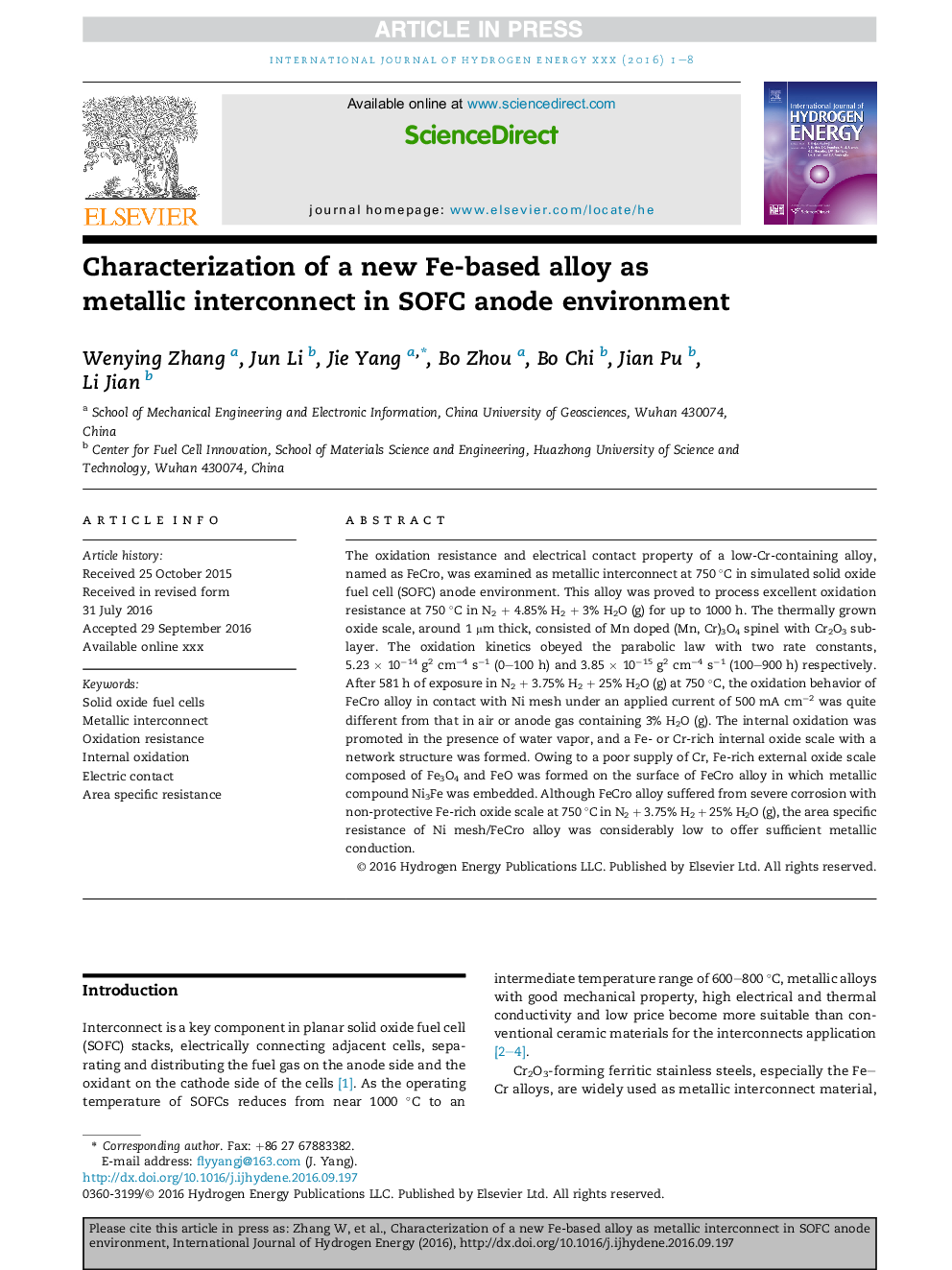| Article ID | Journal | Published Year | Pages | File Type |
|---|---|---|---|---|
| 5147244 | International Journal of Hydrogen Energy | 2016 | 8 Pages |
Abstract
The oxidation resistance and electrical contact property of a low-Cr-containing alloy, named as FeCro, was examined as metallic interconnect at 750 °C in simulated solid oxide fuel cell (SOFC) anode environment. This alloy was proved to process excellent oxidation resistance at 750 °C in N2 + 4.85% H2 + 3% H2O (g) for up to 1000 h. The thermally grown oxide scale, around 1 μm thick, consisted of Mn doped (Mn, Cr)3O4 spinel with Cr2O3 sublayer. The oxidation kinetics obeyed the parabolic law with two rate constants, 5.23 Ã 10â14 g2 cmâ4 sâ1 (0-100 h) and 3.85 Ã 10â15 g2 cmâ4 sâ1 (100-900 h) respectively. After 581 h of exposure in N2 + 3.75% H2 + 25% H2O (g) at 750 °C, the oxidation behavior of FeCro alloy in contact with Ni mesh under an applied current of 500 mA cmâ2 was quite different from that in air or anode gas containing 3% H2O (g). The internal oxidation was promoted in the presence of water vapor, and a Fe- or Cr-rich internal oxide scale with a network structure was formed. Owing to a poor supply of Cr, Fe-rich external oxide scale composed of Fe3O4 and FeO was formed on the surface of FeCro alloy in which metallic compound Ni3Fe was embedded. Although FeCro alloy suffered from severe corrosion with non-protective Fe-rich oxide scale at 750 °C in N2 + 3.75% H2 + 25% H2O (g), the area specific resistance of Ni mesh/FeCro alloy was considerably low to offer sufficient metallic conduction.
Keywords
Related Topics
Physical Sciences and Engineering
Chemistry
Electrochemistry
Authors
Wenying Zhang, Jun Li, Jie Yang, Bo Zhou, Bo Chi, Jian Pu, Li Jian,
